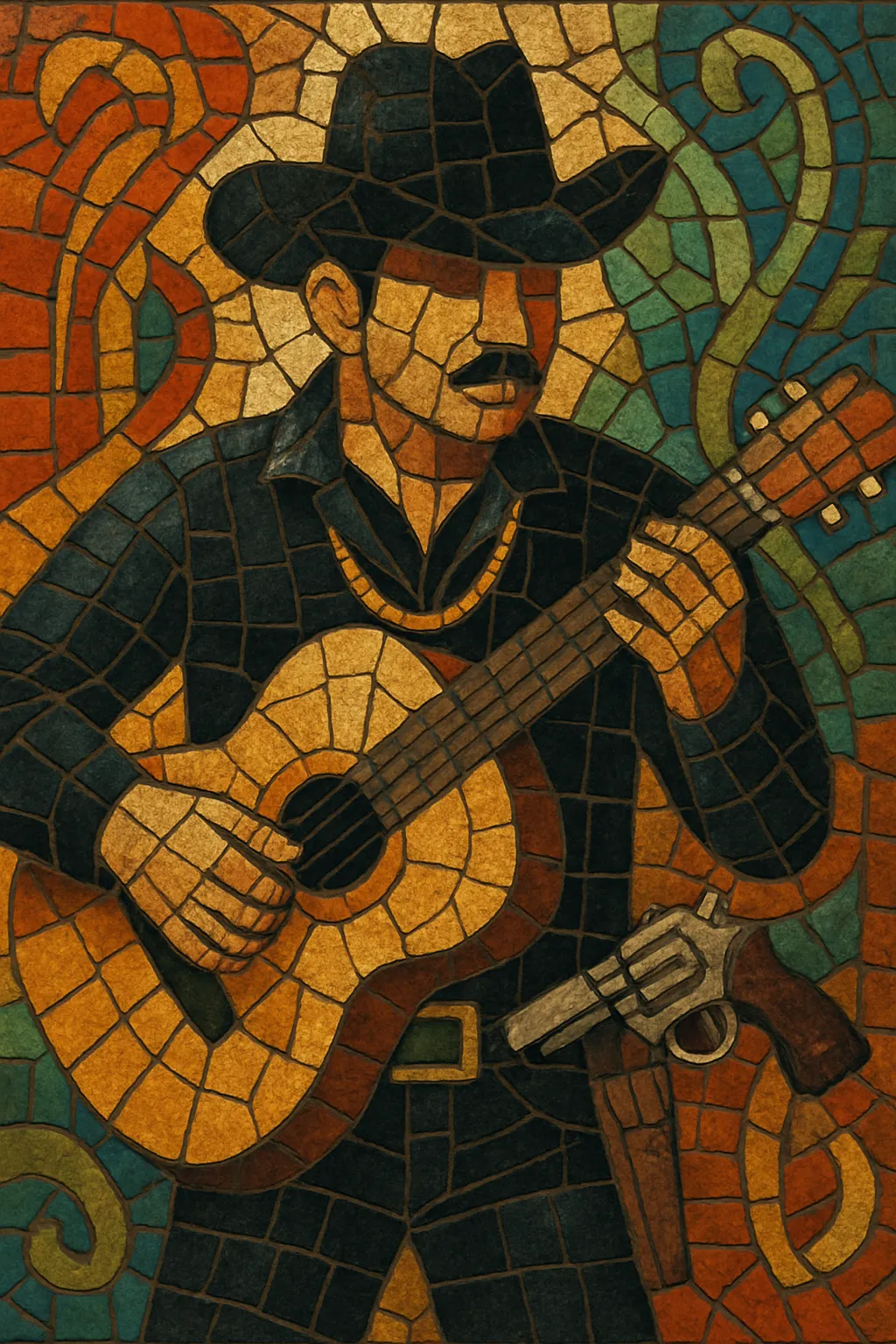Corrido tumbado (sometimes called trap corrido) is a contemporary fusion of the traditional Mexican corrido with trap and hip hop aesthetics.
It preserves acoustic, sierreño-style instrumentation—lead requinto guitar, rhythm guitar (often 12‑string), and tololoche or tuba—while adopting modern rhythmic feels, flows, and production habits from trap: half‑time grooves, skittering hi‑hats, 808 sub‑bass layers, ad‑libs, and light Auto‑Tune.
Lyrically, it updates the corrido’s narrative tradition with first‑person storytelling about hustle, street life, migration, romance, luxury brands, and cannabis culture, frequently delivered with contemporary Mexican slang and occasional Spanglish. The result is a laid‑back yet gritty sound that bridges Regional Mexicano and global urban music cultures.
Corrido tumbado grew out of Mexico’s century‑old corrido tradition—narrative ballads that chronicle heroes, social issues, and everyday life. Through the 2000s–2010s, sierreño and norteño groups revitalized acoustic corridos, while a parallel boom in hip hop and trap reshaped youth culture across the Americas.
Around 2018–2019, a new wave of young artists—many connected to the Los Angeles–Tijuana corridor and indie imprints like Rancho Humilde—began blending corrido storytelling and sierreño instrumentation with trap flows, ad‑libs, and half‑time drum programming. Early singles by Natanael Cano, Junior H, Herencia de Patrones, and collaborators such as Ovi defined the aesthetic: acoustic guitars and tololoche up front, with a relaxed, “tumbado” (laid‑back) vocal delivery and urban lyrical themes.
Streaming platforms and TikTok accelerated the style’s visibility. The sound polarized audiences—traditionalists critiqued its streetwise imagery and modern vocal processing—yet its authenticity and narrative continuity with classic corridos won a large youth base in Mexico and the U.S. Mexican diaspora. Tours, YouTube sessions, and cross‑border collaborations broadened its reach within the wider Regional Mexicano ecosystem.
The movement’s commercial high point came as artists associated with corridos tumbados helped push Regional Mexicano onto global charts—most visibly through Peso Pluma’s rapid ascent and high‑profile collaborations. The style’s success catalyzed new sub‑labels, bigger budgets, and pop/urban crossovers, while preserving an acoustic core. Today, corrido tumbado stands as a flagship of 21st‑century Regional Mexicano innovation, reshaping perceptions of Mexican music worldwide.


